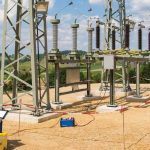The timeless beauty of the future grid will only be skin deep.
The future electricity sector on some level won’t look much different than the current one. Some centralized conventional power generation, some distributed energy, lots of substations and meters.
Look closer, much closer, and it will reveal a deeper transformation than most of us can comprehend. Thousands, maybe millions more sensors, scores of additional reclosers, predictive analytics and machine learning. A more closed-loop and secure communication system put in place.
That last part may have taken a big step recently when the Federal Communications Commission approved making six megahertz of the low-band 900 MHz spectrum available for the development of critical broadband technologies and services.
It’s taking the old two-way radio frequencies and giving them a supersonic makeover.
These would allow for county-by-county broadband licensing which could provide industrial users and power & grid utilities with a cutting-edge, yet separate spectrum allowing for mission-critical functions. This is still in line with the Long Term Evolution (LTE) standard of wireless communication for mobile devices.
“We owned more than half of that band,” said Rob Schwartz, president and COO of Anterix, the broadband services firm which originally petitioned the FCC—along with association of industrial wireless users and, eventually, some utilities–to access those six MHz and allow that sector to operate broadband within it.
 Schwartz
Schwartz
“It’s letting someone deploy private LTE in that space, saying we need that broadband capability,” Schwartz added. “During that time we have been working with utilities, including on experimental licenses with the FCC.”
The electricity sector utilities and groups working with Anterix included Ameren, Southern Co., New York Power Authority, Exelon, Hawaiian Electric and Duke, among others. The goal is deploying exponentially greater numbers of sensors down the line, creating greater situational awareness and control of the grid.
Another key goal is grappling with the growth of distributed energy resources such as solar power.
“The ability to monitor and control all of those systems is essential,” Schwartz said. “It creates a higher level of reliability and resilience.”
Ameren, which provides power in Illinois and Missouri, has been working on pilot projects to determine the capacity within the low-band spectrum. It seeks to consolidate 20 different wireless systems into one and air-gap that away from the internet system.
“Ameren envisions a future where broadband plays a key role in the control and management of our network, providing enhanced communication with co-workers, resulting in a better experience with our customers,” said Bhavani Amirthalingam, senior vice president and chief digital information officer for Ameren. “Ameren intends to use a private LTE network for a wide range of applications slated to expand over time.”
A division of Southern Co. also has embarked on building its own private LTE system, working with Anterix and vendors. Southern Linc is the utility holding company’s regional LTE carrier.
“Southern Linc has first-hand knowledge of the tremendous benefits LTE technology can bring to this sector of the economy, supporting grid modernization, the integration of renewable energy resources, enhanced cybersecurity and other innovations,” Michael Rosenthal, director of legal and external affairs at Southern Linc, said in a statement. “Expanding the private LTE ecosystem will lead to reduced equipment costs and a growing portfolio of technology choices of this essential segment of America’s infrastructure.
And not a moment too soon. Three years ago, the American Society of Civil Engineers gave the U.S. energy infrastructure status a D+ in its quadrennial assessment, noting a power grid at full capacity yet a $177 billion investment gap in the electricity sector infrastructure needs.
Earlier this month, President Trump issued an executive order reserving the right to not allow grid components from selected foreign nations. One of the fears raised was in the communications technology and cybersecurity arena.
A private broadband spectrum alleviates some of those issues on the individual utility-by-utility basis, Anterix’s Schwartz pointed out.
“Grid awareness is the first piece,” he said. “Second, it’s being separated, air-gapped from bad actors on the internet. A lot happens because gateways are open…That firewall and that airgap are the essential pieces/”


